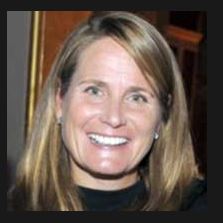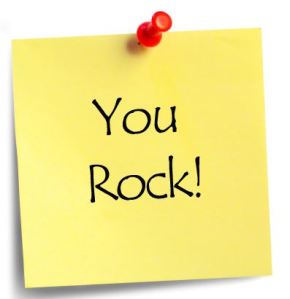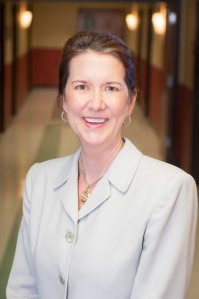The “Family” in Philanthropy: Women and Giving
April 30, 2013
Today’s Gems of Philanthropy luncheon in Sarasota was an inspiration.
A program of Giving Matters, part of the Southwest Florida chapter of the Association of Fundraising Professionals, the annual event inspires women who want to transform their community and our world through philanthropy.
Special guest Anne Mosle, a vice president of the Aspen Institute and executive director of Ascend, reflected on the power of women—how far we have come and the work we have yet to do.
Sophia Smith’s story makes our progress and our opportunities in giving come alive. In 1871, Sophia left a bequest chartering Smith College. She used her family fortune of $400,000 to make outstanding education possible for women as it had been for men but not for herself.
The gift was transformative and its impact continues today, but one aspect of “modern” philanthropy could have made the experience more complete for Sophia—the opportunity to frame and celebrate her good work with others.
Anne believes that our greatest individual potential can be uncovered through our work with each other–whether that “family” exists within our circle of friends or in passing the values of philanthropy along to our children.
As we explore how to make a bigger impact together, women’s giving circles can broaden our individual perspectives, amplify what we could do alone, democratize giving, and expand our relationship with philanthropy to encompass mutual joy and achievement.
Pooling resources—dollars, brain power, creativity and collective ideas–will help us do more with giving than we could do alone. And, says Anne Mosle, it can be a lot more fun.
We share a responsibility for what is happening (or not happening) in our own community, and the philanthropic approaches we take are strengthened through collaboration. Similarly, solutions to difficult issues like poverty are more successful and lasting when they include a two-generation approach.
In either case, a healthy dose of respect is essential.
- Respect yourself.
- Respect each other.
- Respect the community.
Congratulations to Giving Matters, the Southwest Florida Chapter of the Association of Fundraising Professionals, and all of the people who made the event possible.
Huge kudos to the very accomplished and poised Laura Alston, 2013 Young Woman Philanthropists Award Winner. Knowing that Laura has already set sail into the world of good makes us all sleep better at night.
To steal Anne Mosle’s own words for a moment, we would most definitely classify her as a “SHEro.” We loved her closing thought: “Women are like snowflakes. Alone we melt; together we stop the traffic.”
Remembering Your Volunteer Leaders
April 26, 2013
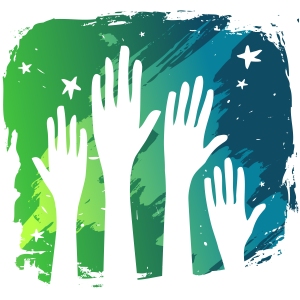 This is National Volunteer Week. Even more than usual, we contemplate what in the world we would do without the support of the folks who make our work possible without being paid.
This is National Volunteer Week. Even more than usual, we contemplate what in the world we would do without the support of the folks who make our work possible without being paid.
Let’s include our volunteer leaders in these reflections. As the ultimate caretakers of our mission, they are vital to our success.
Tensions can emerge when the right dynamics are not in place between board and staff (or between board members themselves), but miscommunication and a lack of training are often at the heart of discord in these important relationships.
Let’s face it: sometimes we just expect board members to “get it” when we haven’t invested in them the way we could or should.
Four of the most important things we can do to build a good experience for our volunteer leaders:
-
Talk through board service expectations before you recruit another volunteer leader. Believe me, it saves the potential board member and your organization a tremendous amount of time and angst to be clear from the beginning. If you haven’t done it already, the clarifying exercise of figuring out your individual board member expectations is powerful. (View a sample board contract that you can customize here.)
-
Make fundraising obligations crystal clear and provide specific direction about how board members can be involved in your development process. Simply expecting board members to know how to help us raise money doesn’t work. During each board meeting, make space for discussion about fundraising and call board members out who are doing a great job. Sharing examples is important: writing thank you notes to event attendees, signing letters to lapsed donors, making donor recognition calls, and arranging coffees with prospects are all ways board members can participate in the process.
-
Say thank you. Sometimes staff wait for praise from the board. After all, the board is in charge of the organization; they are the ultimate leaders. But if you take the time to send a quick e-mail or a hand-written note thanking your board members for their service, it will feel extra special to them. Just do it.
-
Make space for inspiration. If your board meetings are saturated with committee reports, your volunteer leaders will not only have a serious case of the zzzz’s, but they can feel as if their time and talents are wasted. (If they enjoy the endless reports, your organization may not be well-positioned to remain competitive in a world where innovation is more important each day.) Make space in your board agenda for a “big question” or discussion about your strategy, future direction or impact.
All-volunteer organizations: It’s all up to you, board chair. Setting a tone of appreciation and continuing board education for your fellow volunteer leaders will keep them carrying the torch.
We thank the world for volunteers. Indeed, The Giving Partner foundations could not exist without the talented board leaders who volunteer their time and expertise to make our work possible.
-Susie Bowie
Community Foundation of Sarasota County
Disaster Response in Sarasota, a guest post by Mindi Rohan
April 23, 2013
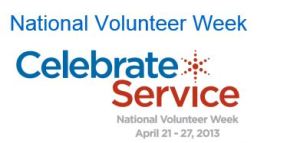 No community is immune to the havoc and devastation caused by disaster, whether natural or man-made. We can’t think about what happened in Boston and not think of what can happen in our own community.
No community is immune to the havoc and devastation caused by disaster, whether natural or man-made. We can’t think about what happened in Boston and not think of what can happen in our own community.
More often we are seeing that spontaneous or unaffiliated volunteers are increasing in numbers during disaster response. These are volunteers who are not trained. They don’t have licenses. They simply come to help.
Did you know that Volunteer Community Connections (VCC) manages spontaneous volunteers in disaster for Sarasota County? That we coordinate directly with local, state and national organizations to meet regional needs? Or that we help faith-based groups create disaster support teams?
VCC is Sarasota’s place to pre-register or sign up for disaster response. We train throughout the year to mobilize volunteers.
Over the years, the Volunteer Center serving Sarasota County has deployed volunteers to New Orleans, Mississippi and Texas.
We have become part of a network that maintains relationships with community members, disaster management agencies and service providers.
For more information on how to help Boston through volunteer efforts click here. Then let people know about VCC. Our disaster registration form can be accessed by visiting our website, www.connectingvolunteers.org. It is everyone’s responsibility to be prepared.
Mindi Rohan
Executive Director
Volunteer Community Connections
Remember, if you are considering a philanthropic response to the tragedy in Boston, The One Fund has been set up by Massachusetts Governor Deval Patrick and Boston Mayor Tom Menino.
Boston Is In Our Thoughts
April 16, 2013
It can be humbling to be reminded of how fragile life is.
Despite the differences in philosophy and politics we may have with people, we care deeply about each other. This care is hardly unique to those who are deeply engrained in philanthropy, but we are close to it every day.
We have a tendency to mobilize, offer resources, feel great compassion for people who are suffering. We feel honored to have the opportunity to help others through the missions of the organizations we support.
It is hard to look at this tragic situation from afar and know there isn’t much we can do from here.
If there is any way to pay tribute to those who were touched by the horrific event yesterday, maybe it is simply continuing to do what we do well already—engaging in good whenever possible (whether organized through an organization or on your own), keeping life in perspective, and remembering the abundance in our own community.
Here are some possibilities to consider:
- Donate blood. Suncoast Communities Blood Bank was one of the first organizations to develop a profile in The Giving Partner. Blood saves lives everyday, whether it is in Boston or in our own community.
- Keep life in perspective. When we care so much, it is easy to get heated about the small things and allow them to cause divisions between ourselves and others. Remember the bigger picture.
- Be grateful for the support systems we have in Southwest Florida. It takes many people and groups to make our community strong. One glance in The Giving Partner, and you will find organizations that handle really tough situations every day. There is always work to be done. Check out the profiles for Mental Health Community Center, Sarasota K-9 Search and Rescue, American Red Cross. You may be surprised to learn the extent of what they do. Some organizations, like ShelterBox, provide services all over the world but have a U.S. office based right here in our community.
Let’s keep those positive thoughts flowing to our friends in Boston.
There are 16 communities around the country using the GuideStar tool we call The Giving Partner. The Boston Foundation is one of them, and we send caring thoughts to our friends there, who will be working hard on the philanthropic response to the explosions at the Boston Marathon.
On the Horizon: More Meaningful Nonprofit Knowledge Sharing
April 14, 2013
 GuideStar, our technology partner for The Giving Partner and the organization that you may know best as the publisher of IRS Form 990s, has a very important mission for individual donors, funders and nonprofits—including yours.
GuideStar, our technology partner for The Giving Partner and the organization that you may know best as the publisher of IRS Form 990s, has a very important mission for individual donors, funders and nonprofits—including yours.
It seeks to revolutionize philanthropy by providing information that advances transparency, enables users to make better decisions, and encourages charitable giving.
(Many of you had the pleasure of meeting Lori Larson, GuideStar’s senior director of DonorEdge, during the 36-Hour Giving Challenge.)
Jacob Harold, president and CEO of GuideStar, just shared his thoughts about proposed changes from the White House that could have a positive impact on our work.
The potential changes are past-due:
- All nonprofits would be required to file their annual IRS Form 990 returns electronically. (Yes, folks, the digital train has long since left the station! That paper and pencil will have to be put in the archives.)
- The IRS must release the charitable information contained in the IRS Form 990s in a “structured, digital form.”
Jacob confirms that these proposals would mean change for GuideStar, but he acknowledges that GuideStar is both ready and happy about the possibilities.
“As it becomes easier to access nonprofit financial data – it will allow us to move beyond our focus on it,” Jacob said in his post. This is exciting, folks.
If you are a fan of Dan Pallotta, this is great news. If you are a fan of equipping today’s donors and funders with more than your financials alone—i.e. more of the impact-focused and strategy-related information you share in your Giving Partner profiles—this is great news.
We are confident in the great philanthropic leadership and thinking of GuideStar and know that the future is bright for us as we look to more meaningful nonprofit knowledge sharing.
Guess who’s ahead of the curve? Your nonprofit, because you are part of The Giving Partner. We’re already collecting, sharing and elevating this kind of knowledge, thanks to you.
Jacob reminds us that these changes are only proposed at the time, but they point to better conversations about our sector and allow us to keep moving on up. We’re ready!
You can read Jacob’s full post here.
-Susie Bowie
Community Foundation of Sarasota County
Is off-line communication all in the past?
April 12, 2013
 With all of the focus on digital marketing and fundraising, sometimes we wonder if the days of the paper newsletter, direct mail piece and annual report are over.
With all of the focus on digital marketing and fundraising, sometimes we wonder if the days of the paper newsletter, direct mail piece and annual report are over.
They are not over.
Understanding that your donors are distinct individuals with different communication preferences will help you harvest more from your marketing efforts and understand whether a print piece, digital outreach–or both–are appropriate. There is no “blanket” answer.
The catch phrase of the last year or two has been “multi-channel” approach, and it works.
When you touch base with your donors to ask them about their preferences, you let them know their time and individuality are valued.
Many of us need to receive messages in a variety of ways before they register.
I have to confess: although I love social media and use it voraciously to stay up to date with nonprofits, friends and family, I really appreciate the occasional print piece sent to me in the mail. I get most of my news online but I really like the Sunday newspaper sent to my house. (And I love a magazine every now and then.)
Direct mail, when compelling and appropriate, remains a very effective fundraising tool.
We frequently get the tri-fold question. Are brochures “old-school?” Are they still worth the effort? Like any communication piece, it depends.
We found a wonderful post on Wild Woman Fundraising, “Are Brochures Still Relevant for Fundraising?”
It shares links to effective print pieces that provide alternatives to the standard tri-fold.
Your one-on-one relationships with donors will almost always be the most effective outreach you can imagine. When enhanced with well-integrated and well-timed communication pieces, your relationships will grow stronger.
Have a great weekend!
In yesterday’s post we shared the realities that many organizations face: increased demand for services and fundraising revenues that cannot keep pace.
To piggyback on the top fundraising opportunities you shared with us in a recent survey—a focused fundraising plan, more board involvement/leadership in fundraising, more staff resources committed to fundraising, and implementation of good systems like donor databases—we wanted to provide a some resources for you.
There are literally thousands of pieces of literature and resources out there on this subject. Here are some basic choices to get your juices flowing:
A focused fundraising plan. Design it based on your own organization’s complexity (or simplicity) with sharp attention to diverse funding sources and specific strategies/action steps for each.
- A sample (simple) online fundraising plan. (Network for Good)
- John Elbare’s presentation on donor development & retention.
- Sample development plan template (Greenlights for Nonprofit Success)
- 10 Fundraising Mantras for 2013 (Network for Good)
More board involvement in fundraising.
- FREE one hour webinar on April 30, “Building a Strong Board for Fundraising Success” (Network for Good)
- Nine Ways Board Members Can Raise Money Without Fundraising (Social Velocity)
- The Myths and Realities of Board Members and Fundraising (GuideStar)
- 9 Tips for Recruiting a Fundraising Board (Carol Weisman)
Implementation of good systems and donor databases.
- A Consumer’s Guide to Low Cost Donor Management Systems (IdealWare)
- Ten Common Mistakes in Selecting Donor Databases (And How to Avoid Them) (IdealWare)
It goes without saying that reading great articles and tip sheets, watching webinars, and attending fundraising workshops will not work for you if you stop there and if you stand alone in your efforts.
A good, committed team is essential. It takes work, time.
Many successful organizations use similar models–careful planning to meet current and future needs, strong donor relationships, diversified funding to avoid “emergency” situations, and a deliberately selected board ready for action. It takes time
You will get some “no’s” along the way!
Finally, consider joining the Southwest Florida Chapter of the Association of Fundraising Professionals or attending its monthly meetings. You will surround yourself with professionals who are committed to continuing education in the field—ethics, planned giving, annual giving, major gifts, and more. The online AFP resource library available to members is very good.
Share any resources you have found to be helpful in your fundraising journeys. We would love to pass them along to others.
This Scares Our Pants Off.
April 10, 2013
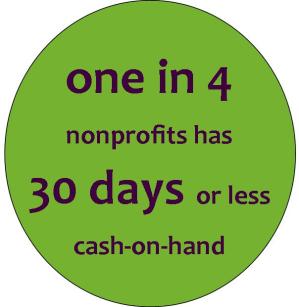 The Nonprofit Finance Fund recently released its 2013 State of the Nonprofit Sector Report.
The Nonprofit Finance Fund recently released its 2013 State of the Nonprofit Sector Report.
More than half of nonprofits reported that they were unable to meet demand for services over the last year, and a slightly higher percentage do not believe they will be able to meet it this year.
Throw in the 42% of nonprofits that report not having the right mix of financial resources to thrive and be effective in the next 3 years, and we have a scary but realistic picture.
By the way, one in 4 nonprofits has 30 days or less cash-on-hand.
What do we do with this?
There are lots of resources available to get our sector in better shape.
We are lucky to be in a community with capacity building assistance available from two community foundations, facilitation of collaboration discussions available from The Patterson Foundation, a strong local Association of Fundraising Professionals presence (Southwest Florida chapter), and many other supports.
Let’s start with new nonprofit organizations. There may be important missions that still need to be addressed nationally and in our community, but before embarking on that next 501(c)(3) journey, it is critical to research funding models, understand realistic outcomes and true needs, and consider ways to collaborate or work with existing programs first.
We get calls weekly from well-meaning people who want to know how to start a new nonprofit. Few have answered critical questions related to sustainability. Our first suggestion is to review The Giving Partner to understand what established organizations are already addressing their mission focus.
Next, let’s look at your fundraising needs.
The recent survey of nonprofit professionals who attended John Elbare’s workshop, “Cultivating Donors After the Challenge” at the Community Foundation of Sarasota County shared some insights about their needs. Here are the most critical fundraising opportunities they identified:
- At the top of the list: a focused fundraising plan.
- Second: more board involvement/leadership in fundraising.
- Third: more staff resources committed to fundraising.
- Fourth: implementation of good systems like donor databases.
Tomorrow we will post links to resources that help address these needs.
One thing is clear: developing a good fundraising program, revenue that increases from one year to the next, and healthy cash reserves (at least 3-6 months) are investments we cannot afford to neglect.
We can track these trends locally via nonprofit profiles in The Giving Partner. Funders and donors in our community want you to be successful!
-Susie Bowie
Community Foundation of Sarasota County
Stress Busters: Gratitude, Laughter and One Task at a Time – a guest post by Sondra Guffey
April 9, 2013
Season’s almost over, so everything is calm, collected and copacetic, right? Well, it’s probably not that easy. The demands on those in nonprofits never ease. Plus, we live in a society where stress and anxiety are with us daily. Managing the demands of life is the key to handling stress and living well.
There is good stress in the world. This is normal and manageable. It actually motivates us to work hard and excel. Good stress comes from competition, forces of the world and our own desires to do well.
For many people the potentially harmful stress starts with our overwhelming compulsion to try to juggle too many things at once.
Multi-tasking is highly over-rated. In fact, even The Harvard Business Review agrees that it’s actually counter-productive. We think we are getting more done by doing more than one thing at a time, but we are splitting our attention and only partially engaged in several activities rather than being fully engaged in only one. So we’re not as productive. And that actually creates more stress.
For those who just need to get back on track, one great and simple stress-reliever is laughter! It relaxes tense muscles, reduces blood pressure & heart rate, boosts the immune system and causes the body to release pain-fighting hormones! So bring some healthy laughter into your workplace.
Exercise is also a great stress-buster. Find ways to get fit while still at work! Stand more. You’ll burn more calories when standing rather than sitting. Walk over to a co-workers office rather than sending an email. Try conducting a meeting while walking. The movement boosts creativity and keeps people focused. There are some simple exercises you can do at your desk. Stretching and deep breathing are also helpful. Sure, you may look a little silly doing squats at your desk, but you’ll provide good laughter for your co-workers!
Showing gratitude and appreciation also decreases stress. Validate concerns of employees, and take time to listen to them. Encourage your colleagues and staff members to take care of themselves.
Stress is not so good when it is constant and wears a person down. When someone is less able to cope, the stress level is too high. Then, many people begin to procrastinate, are late for deadlines, miss work and go into withdrawal. Watch out for feelings of hopelessness or helplessness, depression, substance abuse and contemplation of self-destructive actions. At that point a professional counselor, psychologist or psychiatrist is needed. Manatee Glens offers help at many levels and sees healthy breakthroughs every day!
Warning: being in a constant hurry and trying to force things to happen, reduces our ability to find creative ideas, use our intuition and listen to our hunches.
Learn to coral the stressors, solve problems, prioritize and compartmentalize. And never forget to laugh!
-Sondra Guffey
Director of Public Relations
Manatee Glens
Sondra.guffey@manateeglens.org

